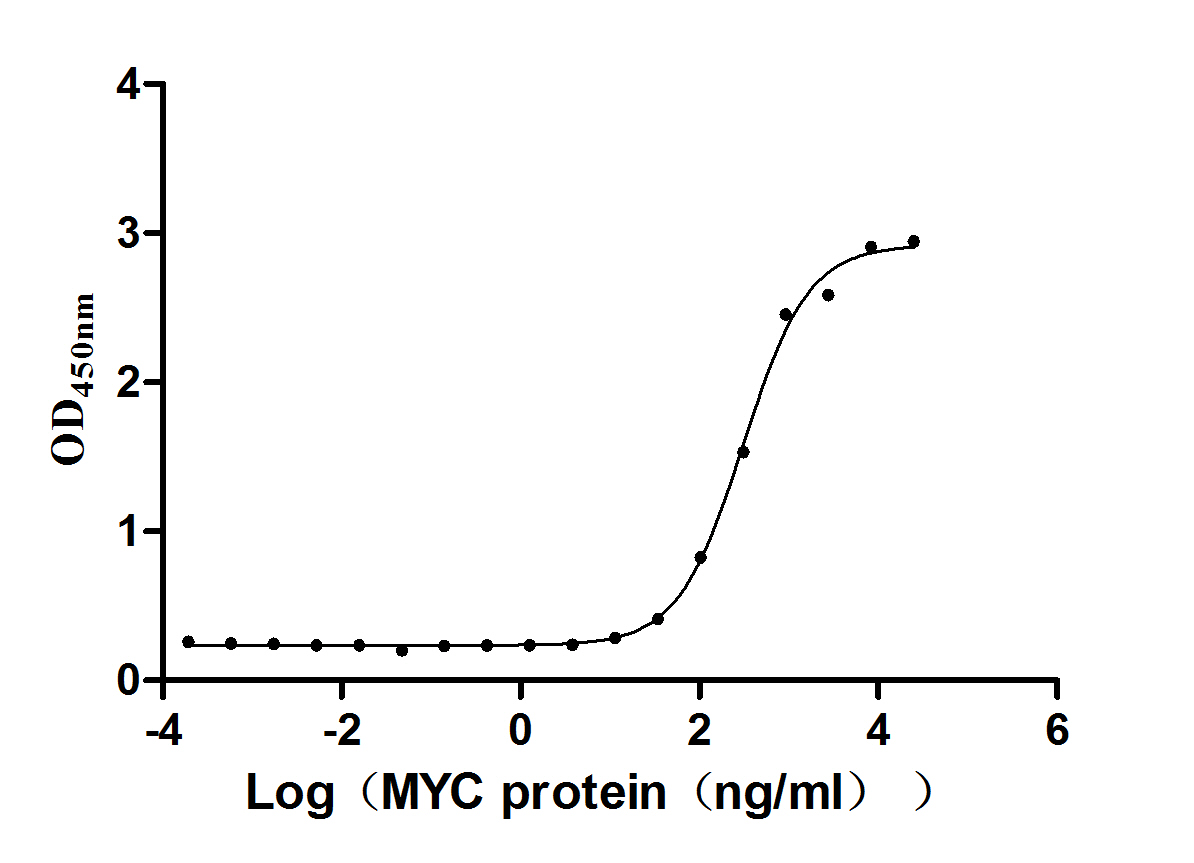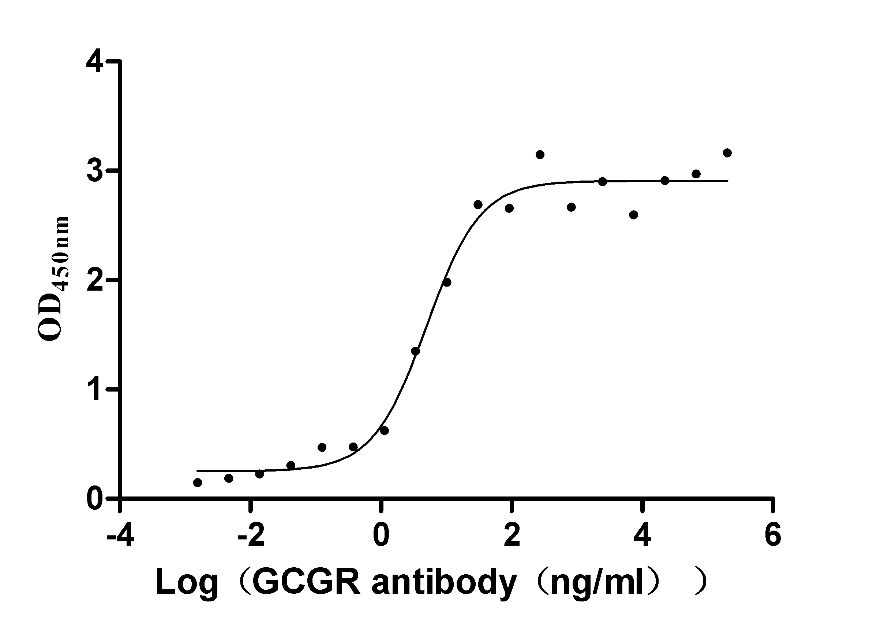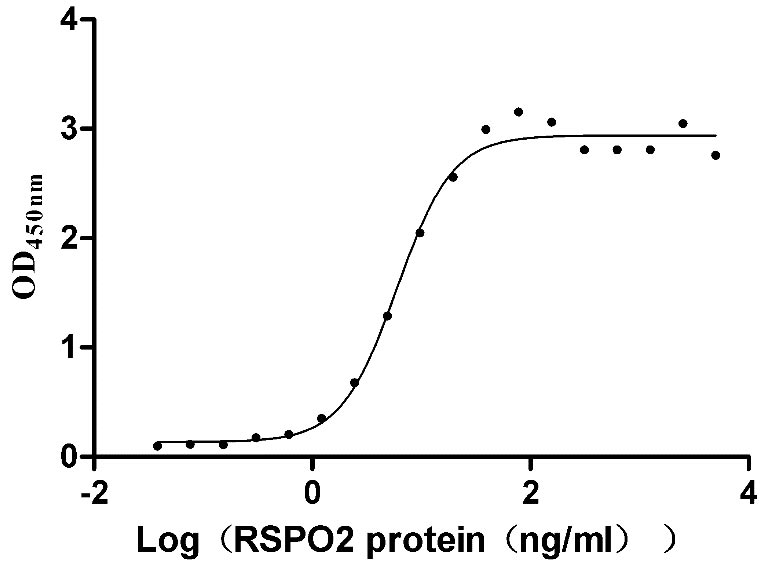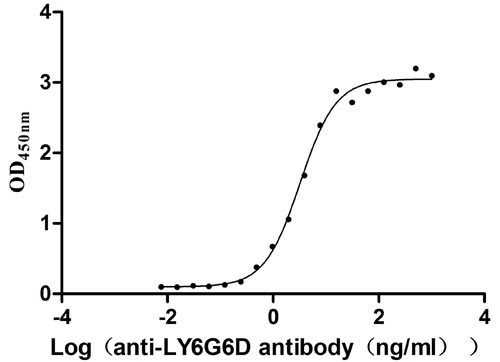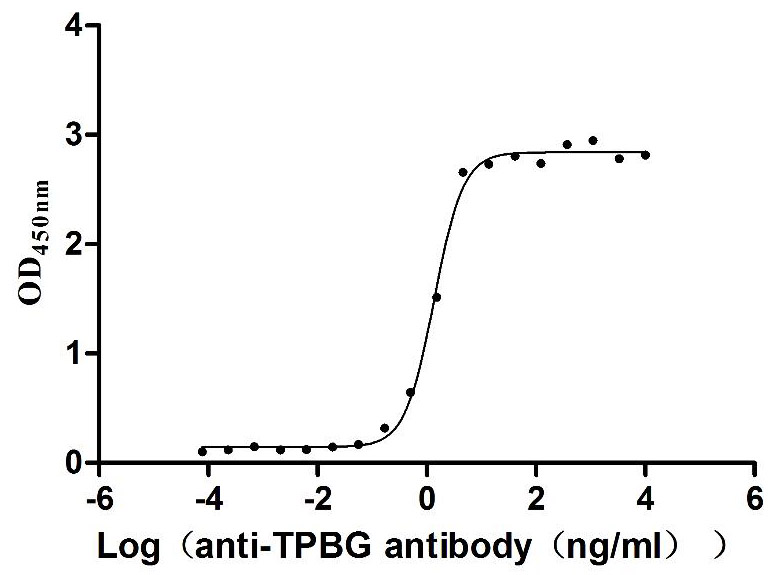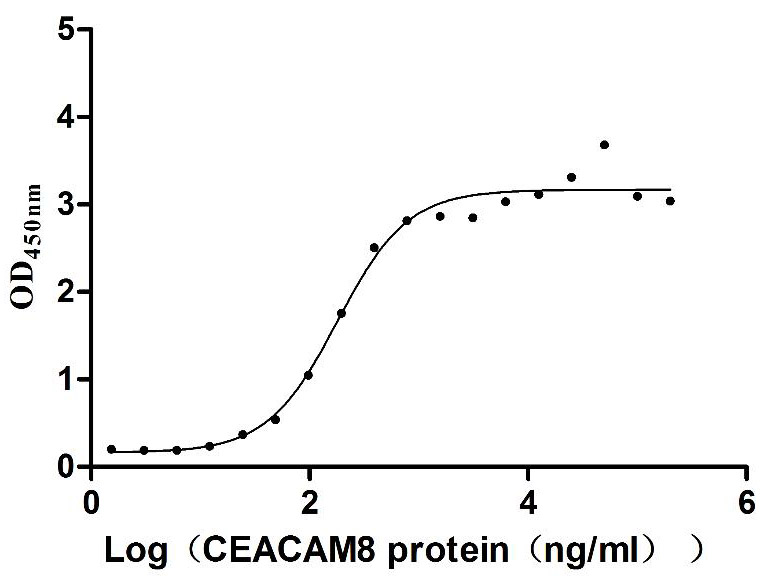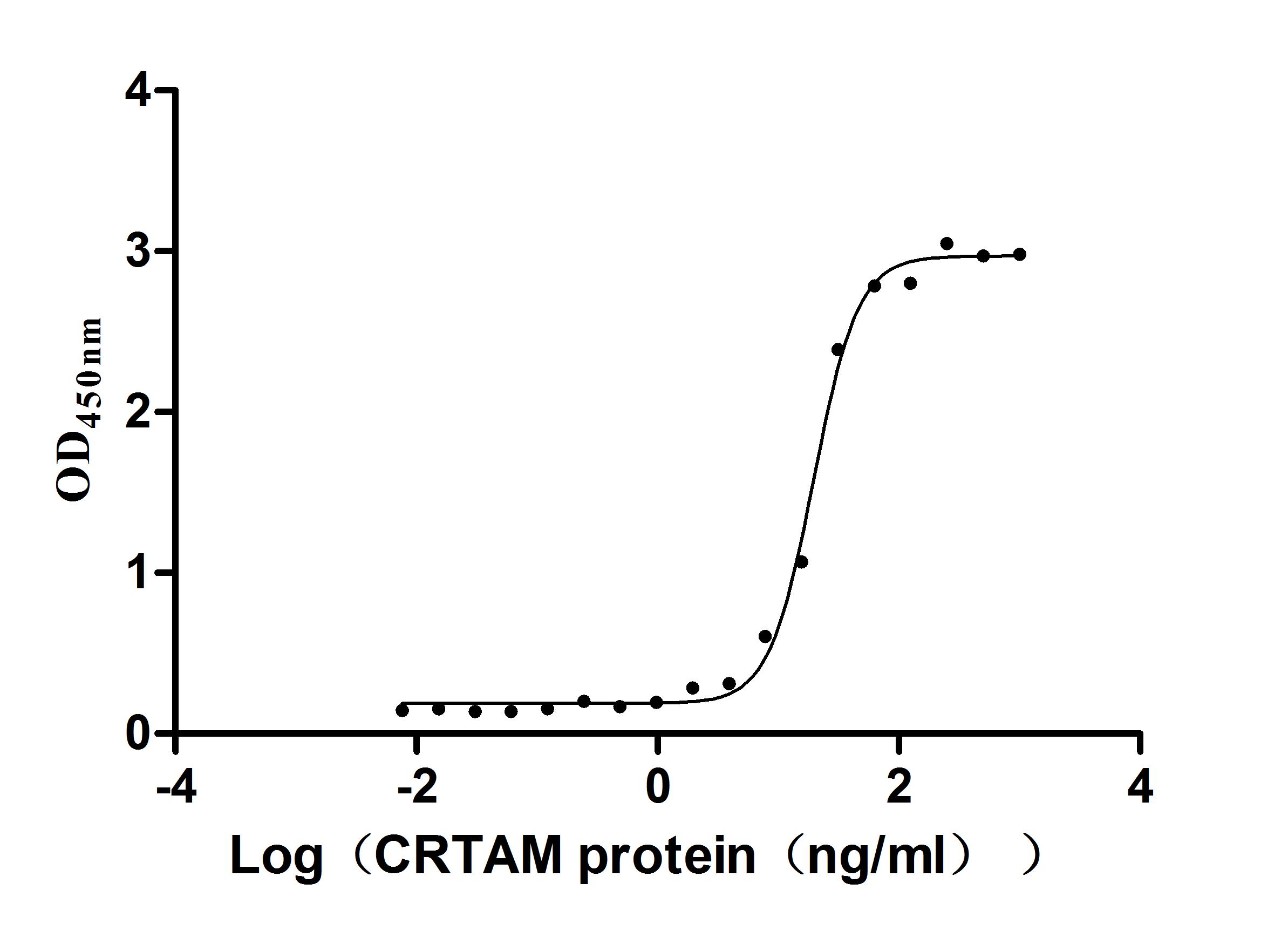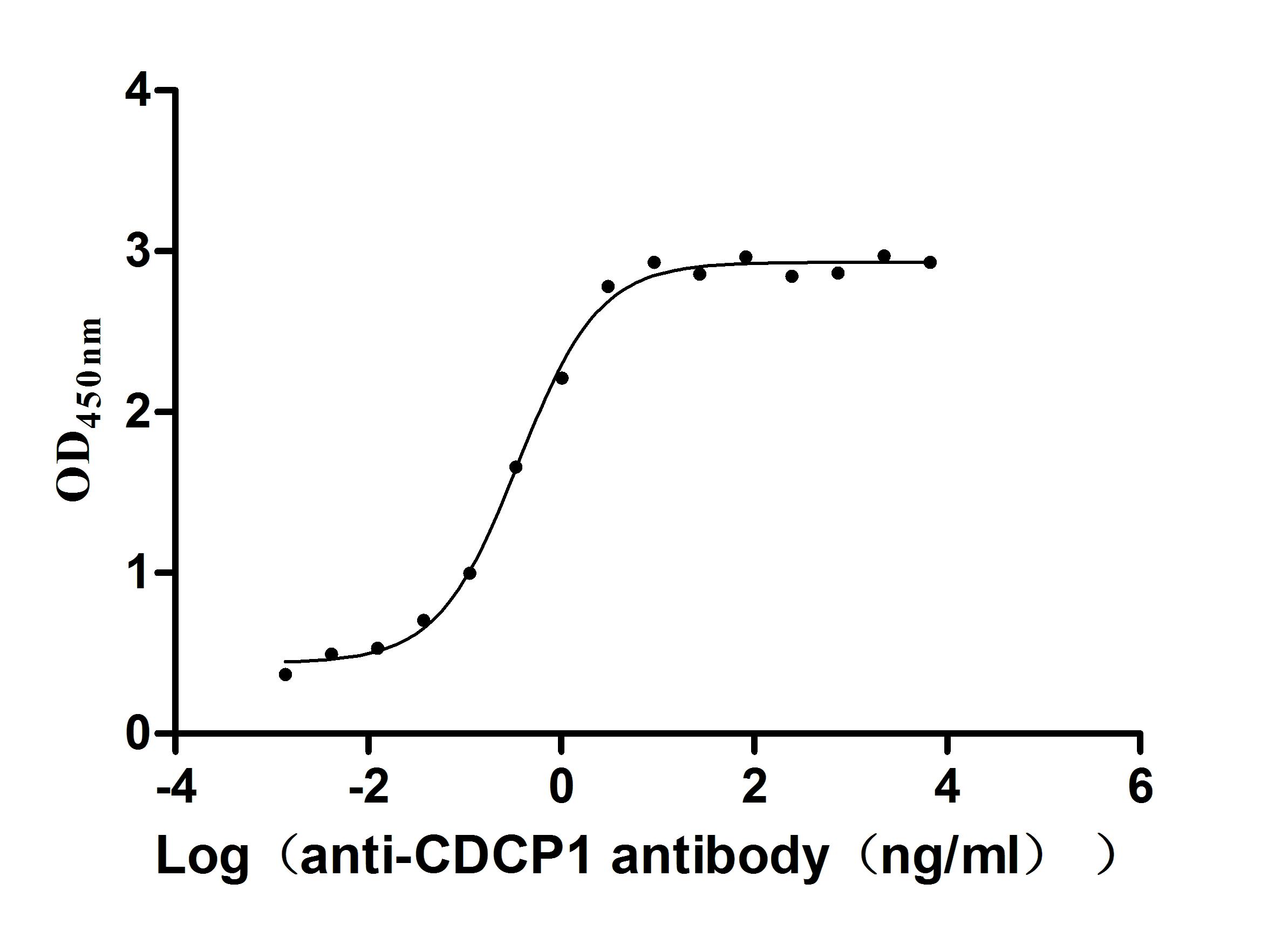Recombinant Human Small conductance calcium-activated potassium channel protein 3 (KCNN3), partial
-
中文名稱(chēng):人KCNN3重組蛋白
-
貨號(hào):CSB-YP880079HU1
-
規(guī)格:
-
來(lái)源:Yeast
-
其他:
-
中文名稱(chēng):人KCNN3重組蛋白
-
貨號(hào):CSB-EP880079HU1
-
規(guī)格:
-
來(lái)源:E.coli
-
其他:
-
中文名稱(chēng):人KCNN3重組蛋白
-
貨號(hào):CSB-EP880079HU1-B
-
規(guī)格:
-
來(lái)源:E.coli
-
共軛:Avi-tag Biotinylated
E. coli biotin ligase (BirA) is highly specific in covalently attaching biotin to the 15 amino acid AviTag peptide. This recombinant protein was biotinylated in vivo by AviTag-BirA technology, which method is BriA catalyzes amide linkage between the biotin and the specific lysine of the AviTag.
-
其他:
-
中文名稱(chēng):人KCNN3重組蛋白
-
貨號(hào):CSB-BP880079HU1
-
規(guī)格:
-
來(lái)源:Baculovirus
-
其他:
-
中文名稱(chēng):人KCNN3重組蛋白
-
貨號(hào):CSB-MP880079HU1
-
規(guī)格:
-
來(lái)源:Mammalian cell
-
其他:
產(chǎn)品詳情
-
純度:>85% (SDS-PAGE)
-
基因名:KCNN3
-
Uniprot No.:
-
別名:KCNN3; K3; Small conductance calcium-activated potassium channel protein 3; SK3; SKCa 3; SKCa3; KCa2.3
-
種屬:Homo sapiens (Human)
-
蛋白長(zhǎng)度:Partial
-
蛋白標(biāo)簽:Tag?type?will?be?determined?during?the?manufacturing?process.
The tag type will be determined during production process. If you have specified tag type, please tell us and we will develop the specified tag preferentially. -
產(chǎn)品提供形式:Lyophilized powder
Note: We will preferentially ship the format that we have in stock, however, if you have any special requirement for the format, please remark your requirement when placing the order, we will prepare according to your demand. -
復(fù)溶:We recommend that this vial be briefly centrifuged prior to opening to bring the contents to the bottom. Please reconstitute protein in deionized sterile water to a concentration of 0.1-1.0 mg/mL.We recommend to add 5-50% of glycerol (final concentration) and aliquot for long-term storage at -20℃/-80℃. Our default final concentration of glycerol is 50%. Customers could use it as reference.
-
儲(chǔ)存條件:Store at -20°C/-80°C upon receipt, aliquoting is necessary for mutiple use. Avoid repeated freeze-thaw cycles.
-
保質(zhì)期:The shelf life is related to many factors, storage state, buffer ingredients, storage temperature and the stability of the protein itself.
Generally, the shelf life of liquid form is 6 months at -20°C/-80°C. The shelf life of lyophilized form is 12 months at -20°C/-80°C. -
貨期:Delivery time may differ from different purchasing way or location, please kindly consult your local distributors for specific delivery time.Note: All of our proteins are default shipped with normal blue ice packs, if you request to ship with dry ice, please communicate with us in advance and extra fees will be charged.
-
注意事項(xiàng):Repeated freezing and thawing is not recommended. Store working aliquots at 4°C for up to one week.
-
Datasheet :Please contact us to get it.
相關(guān)產(chǎn)品
靶點(diǎn)詳情
-
功能:Forms a voltage-independent potassium channel activated by intracellular calcium. Activation is followed by membrane hyperpolarization. Thought to regulate neuronal excitability by contributing to the slow component of synaptic afterhyperpolarization.
-
基因功能參考文獻(xiàn):
- SK3 expression was strongly reduced in the Hirschsprung disease patient intestines, both in the ganglionic and aganglionic bowel, compared to the control intestines. PMID: 29439660
- this is the first report to associate KCNN3 with poor prognosis and drug resistance in ovarian cancer (OC). The present findings indicated that KCNN3 is a potential prognostic marker and therapeutic target for OC. PMID: 29901154
- Data indicate that the inhibition of the Store Operated Calcium Entry (SOCE)-dependent colon cancer cell migration through SK3/TRPC1/Orai1 channel complex by the alkyl-lipid Ohmline may be a strategy to modulate Anti-EGFR mAb action in metastatic colorectal cancer (mCRC). PMID: 27102434
- A splice variant SK3.2 was found in ventricular myocyte mitochondria and its mRNA expression was studied. PMID: 28342809
- Analyses of tissue microarray from colorectal cancer patients showed higher SigmaR1 expression levels in cancer samples and a correlation with tumor grade. Moreover, the exploration of a cohort of 4937 breast cancer patients indicated that high expression of SigmaR1 and Orai1 channels was significantly correlated to a lower overall survival PMID: 28114279
- Edelfosine is able to effectively inhibit migration and invasion of UC cells in vitro and in vivo in an SK3-dependent way, pointing towards a possible role for Edelfosine as an antiinvasive drug to effectively inhibit UC cell invasion and metastasis. PMID: 26619845
- KCNN3 gene encodes small conductance calcium-activated potassium (SK) channel 3 PMID: 26658685
- Decreased SK3 expression in ganglionic bowel may explain the basis of persistent bowel symptoms in some patients following a properly performed pull-through operation for Hirschsprung's disease. PMID: 25783396
- KCNN3 single-nucleotide polymorphism rs13376333 significantly increases the risk of Atrial Fibrillation. PMID: 26370375
- There was no significant difference in the genotype distributions or allele frequencies of the SNP rs1131820 between AF patients and controls. PMID: 24978901
- SK3 channel and mitochondrial ROS mediate NADPH oxidase-independent NETosis induced by calcium influx. PMID: 25730848
- Reduced SK3 expression attenuates endometrial cell migration and is associated with unsuccessful pregnancy outcomes. PMID: 24978672
- Intermediate conductance Ca2+-activated K+ channels modulate human placental trophoblast syncytialization. PMID: 24595308
- SK3 channel is activated in neuroblastoma cells by overexpression of human endogenous retrovirus W family envelope gene. PMID: 23727510
- Atrial miR-499 is significantly upregulated in AF, leading to SK3 downregulation and possibly contributing to the electrical remodeling in AF. PMID: 23499625
- study shows SK3 channels are localized in CD34(+) cells and not in smooth muscle cells and that expression of SK3 channels is higher in non-pregnant compared to pregnant myometrium; propose SK3 activators reduce myometrium contractility by modulating telocyte function; first report to provide evidence for possible role of SK3 channels in uterine telocytes PMID: 22947283
- Specific expression of hSK3 led to deficits in attention and sensory gating and heightened sensitivity to a psychomimetic drug PMID: 24206670
- Maternal association with preterm birth was found in small conductance calcium activated potassium channel isoform 3 (KCNN3, rs883319; P=0.01 PMID: 23018797
- CaMKK/Akt/p300 cascade plays an important role in laminar stress-dependent induction of KCa2.3 and KCa3.1 expression, thereby regulating EC function and adaptation to hemodynamic changes. PMID: 23792675
- We found that the SK3 channel triggers an association with the Orai1 channel within lipid rafts in primary human tumors and bone metastases PMID: 23774210
- Two conserved arginine residues from the SK3 potassium channel outer vestibule control selectivity of recognition by scorpion toxins. PMID: 23511633
- SK3-mediated [Ca(2+)]i elevation and membrane potential hyperpolarization in trophectoderm cells are important for blastocyst hatching. PMID: 22416006
- A total of four intronic single nucleotide polymorphisms in the KCNN3 gene display significant association with migraine. PMID: 22030984
- There is a significant association of rs13376333 in KCNN3 on chromosome 1q21 with atrial fibrillation in a Taiwanese population. PMID: 22019810
- There is an association between the synonymous single-nucleotide polymorphism rs1131820 in KCNN3 and lone atrial fibrillation. PMID: 21398315
- The longer polyglutamine stretches are associated with reduced conductance of KCNN3 channel. PMID: 21433290
- Six SNPs (rs1218585, rs4845396, rs12058931, rs1218568, rs6426985, and rs4845394) in KCNN3 were associated with pretem birth. PMID: 21266667
- Oxaliplatin-neurotoxicity may be related to distribution of the polymorphic CAG motif of the SK3 gene, which might modulate nerve after-hyperpolarization. The 13-14 CAG repeat allele could mark patients susceptible to acute OXA neurotoxicity. PMID: 20872144
- This study suggests that the SNPs within the kccn3 genes we examined do not play a major role in schizophrenia in the Han Chinese PMID: 20933057
- analysis of recycling of the Ca2+-activated K+ channel, KCa2.3, is dependent upon RME-1, Rab35/EPI64C, and an N-terminal domain PMID: 20360009
- rs13376333 is intronic to KCNN3, which encodes a potassium channel protein involved in atrial repolarization. PMID: 20173747
- Membrane hyperpolarization increases melanoma cell motility via the KCa2.3 channel. The KCa2.3 channel might be the only member of the Ca(2+)-activated K(+) channel family involved in melanoma cell motility pathways. PMID: 19646982
- The hSKCa3 potassium channel gene contains polymorphic CAG repeats in the coding region and is involved in the regulation of neuronal activity. The longer repeat alleles of the hSKCa3 gene may contribute to the genetic susceptibility to AN. PMID: 11803450
- results do not support the involvement of the hKCa3 gene in schizophrenia, at least in the Japanese population (hKCa3; a calcium-activated potassium channel gene) PMID: 11807415
- the combined effect of long CAG repeats and the differences in allele sizes contribute to symptom expression of schizophrenia, particularly on the anergia-activation-paranoid axis PMID: 12007452
- Kit-negative fibroblast-like cells express this channel in smooth gut muscle in health and dissease. PMID: 12457234
- Decreased expression of SK3 channels in the aganglionic bowel may contribute to motility dysfunction in Hirschsprung's disease bowel. PMID: 12778407
- novel SK3 transcript, SK3-1B that utilizes an alternative first exon (exon 1B), but is otherwise identical to SK3 and may contribute to pathogenesis of schizophrenia. PMID: 12808432
- A contribution of the KCNN3 gene to genetic susceptibility to major psychosis and their phenotypic polymorphism may be related to the difference of allele length rather than to the number of CAG repeats. PMID: 12960745
- the SK3 subunit of small conductance Ca2+-activated K+ channels interacts with both SK1 and SK2 subunits PMID: 14559917
- SK3-1C is a dominant-negative suppressor of SKCa and IKCa channels PMID: 14638680
- In this study a lower frequency for 1137-1140 Del homozygote of KCNN3 gene was observed, and the HHRR and TDT analyses suggested that the 1137-1140 Del alleles of KCNN3 gene be unlikely to confer susceptibility to schizophrenia. PMID: 16086287
- Lack of evidence that length variations of the second polyglutamine array in the N-terminus of the KCNN3 channel exert an effect in migraine susceptibility. PMID: 16162291
- The allelic frequency distribution of the CAG repeat in KCNN3 gene was compared in Serbian schizophrenic patients and controls. Data indicate a significant association between longer CAG repeats in second polymorphic KCNN3 region and schizophrenia. PMID: 16393881
- The current work provides evidence for a fundamental role of the N-terminal domain and the calmodulin binding domain in SK3 trafficking in neurons. PMID: 17061167
- Increased expression of SK3 has a critical role in the increased Ca(2+)-induced fragility in DM1 cells. PMID: 17101631
- Endogenous ADMA may be an important factor for down-regulation of the expression of endothelial SK3 in atherosclerotic animals. PMID: 17869187
- KCa3.1 and KCa2.3 are translocated out of the endoplasmic reticulum associated with Derlin-1. PMID: 18227067
- No statistical association between the atrioventricular heart block phenotype and either the [CTG]n expansion length or the presence of specific single nucleotide polymorphisms in the SK3 gene were detected. PMID: 19472917
顯示更多
收起更多
-
亞細(xì)胞定位:Membrane; Multi-pass membrane protein.
-
蛋白家族:Potassium channel KCNN family, KCa2.3/KCNN3 subfamily
-
數(shù)據(jù)庫(kù)鏈接:
Most popular with customers
-
Recombinant Human papillomavirus type 16 Protein E7 (E7) (Active)
Express system: E.coli
Species: Human papillomavirus type 16
-
Recombinant Human Glucagon receptor (GCGR), partial (Active)
Express system: Mammalian cell
Species: Homo sapiens (Human)
-
Recombinant Human E3 ubiquitin-protein ligase ZNRF3 (ZNRF3), partial (Active)
Express system: Mammalian cell
Species: Homo sapiens (Human)
-
Recombinant Human Lymphocyte antigen 6 complex locus protein G6d (LY6G6D) (Active)
Express system: Yeast
Species: Homo sapiens (Human)
-
Recombinant Human Trophoblast glycoprotein (TPBG), partial (Active)
Express system: Mammalian cell
Species: Homo sapiens (Human)
-
Recombinant Human Carcinoembryonic antigen-related cell adhesion molecule 6 (CEACAM6) (Active)
Express system: Mammalian cell
Species: Homo sapiens (Human)
-
Recombinant Human Cell adhesion molecule 1 (CADM1), partial (Active)
Express system: Mammalian cell
Species: Homo sapiens (Human)
-
Recombinant Human CUB domain-containing protein 1 (CDCP1), partial (Active)
Express system: Mammalian cell
Species: Homo sapiens (Human)


